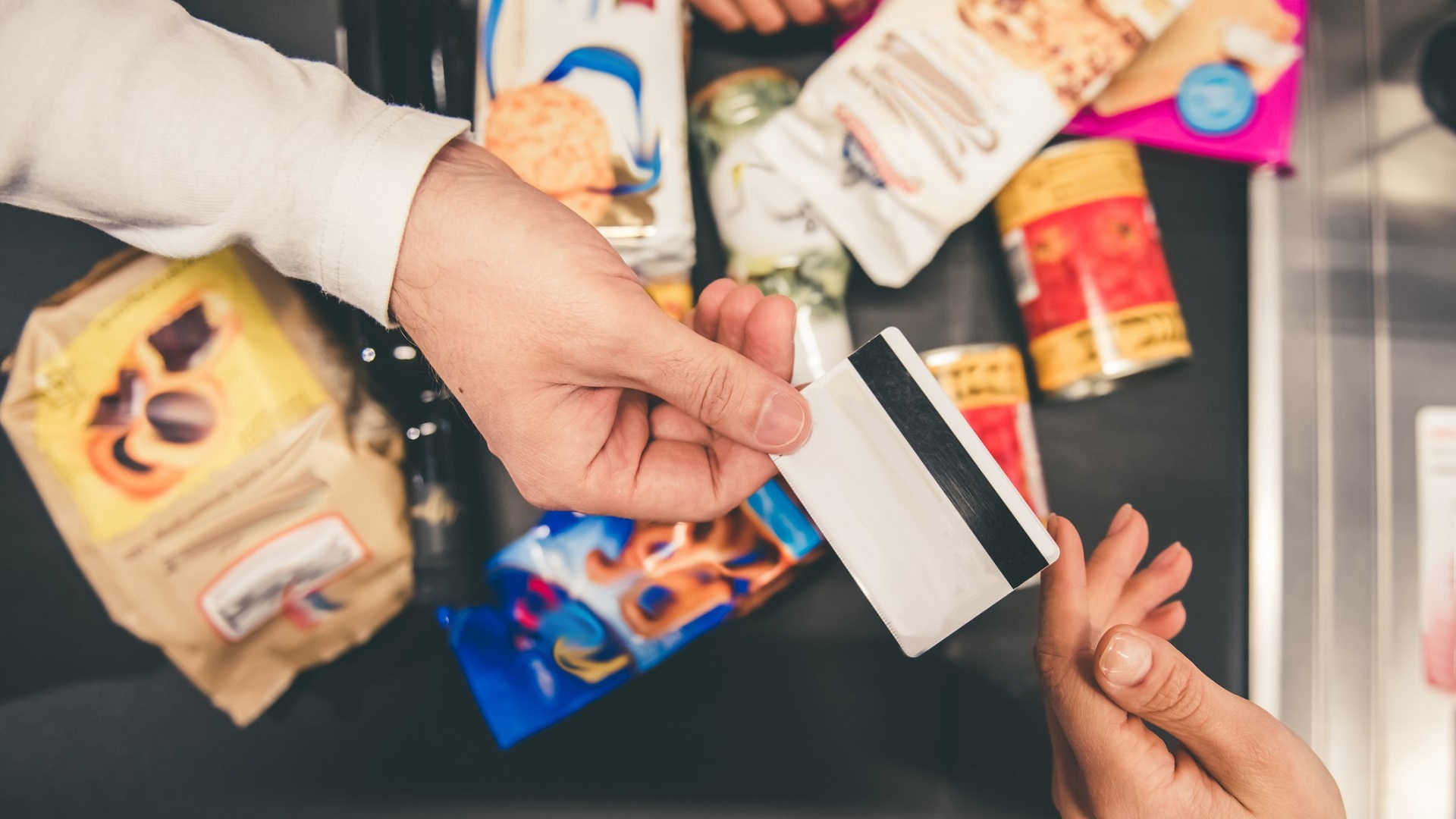
Rising costs across the board mean many people are having to choose between cash or credit at the grocery store, and more often than not, credit wins even when balances are already high.
A PYMNTS report found that 52% of consumers now swipe a credit card to pay for groceries, and it’s not just older Americans relying on plastic. According to John Stevenson, 44% of Gen Z say they use credit cards to support their financial well-being. The problem is relying on credit for the basics can become a longer-term problem.
Learn More: Clever Ways To Save Money That Actually Work in 2025
Read More: The ChatGPT Grocery Shopping Hack That Saves Retirees $100 or More per Month
GOBankingRates spoke to Natalia Brown, chief consumer affairs and creditor relations officer at National Debt Relief, to find out what can be done to try to break the cycle.
Why Grocery Purchases on Credit Become a Cycle
“Relying on credit cards for everyday essentials, such as groceries, is a sign that a family is financially stretched,” Brown said.
Though it might seem like a short-term fix, a recent National Debt Relief survey found that families with credit card debt already owe more than $14,000 on average. With interest rates rising, many people will find it even harder to keep on top of balances.
Brown explained that food is often one of the first essentials to go on a card when people are struggling. But over time, that habit drains savings, adds stress and makes it harder to reach bigger goals, like buying a home or saving for college.
Check Out: Trump Said He’d Lower Grocery Prices on Day 1: See Where They Stand Now
First Steps Toward Breaking the Pattern
The first step is recognizing the habit and being clear about the size of the problem. If groceries are going on a credit card because there’s no room left in the budget, that’s a sign it’s time to reassess spending and income before the debt snowballs.
Brown recommended tracking food-related expenses for 30 days, and using that to set a realistic grocery budget based on household income and expenses. If the numbers show more money being spent than expected, it makes it easier to see where to cut back and whether credit cards are being used out of habit or because there isn’t enough to cover basics.
Budgeting Tools Can Make a Difference
Modern budgeting tools and apps can be helpful to see spending patterns that can otherwise stay hidden, and even a basic spreadsheet works if it’s used consistently.
“By categorizing spending, sending alerts when budgets are exceeded and showing trends over time, they create accountability and reduce anxiety,” Brown explained.
Practical Grocery Strategies
Making different choices in terms of planning and shopping can also make a difference. Even small things like making meal plans and sticking to a list can save money over time, and bulk buys and lower-cost retailers also stretch dollars further.
Brown stressed an important mindset shift: “Relying on credit cards for essentials like groceries is not a personal failure; it’s often a response to financial pressures no one should have to face.”
More From GOBankingRates
- Here's What It Costs To Charge a Tesla Monthly vs. Using Gas for a Nissan Altima
- Why You Should Start Investing Now (Even If You Only Have $10)
- 5 Cities You Need To Consider If You're Retiring in 2025
- Mark Cuban Tells Americans To Stock Up on Consumables as Trump's Tariffs Hit -- Here's What To Buy
This article originally appeared on GOBankingRates.com: What To Do If You’re Relying on Credit Cards for Groceries







